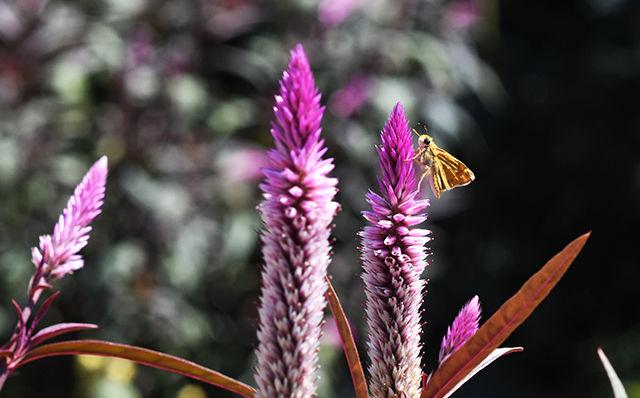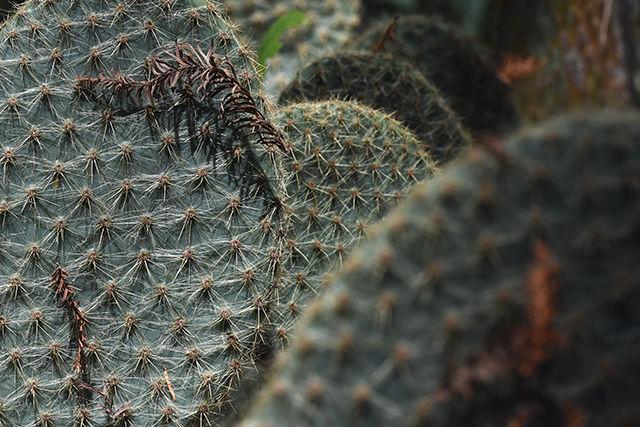As the JC Raulston Arboretum commemorates its 40th year, those touched by its namesake celebrate a lasting legacy.
“From his earliest days he wanted to be a gardener,” said Molly Renda, exhibits program librarian and coordinator of D.H. Hill’s current Raulston display. “It was evident that he was so rooted in this idea of growing things and in plant culture.”
From his childhood drawings and letters to his aunt about “a little garden of his own,” Raulston’s passions only increased as he matured. He was a successful student, a Vietnam War veteran, a horticultural innovator and eventually a well-loved professor.
In 1975, he accepted a position at NC State in the Department of Horticultural Science. According to Renda, the department head, James Strobel, wanted to improve NC State’s ornamental horticultural areas.
Raulston was tasked with this mission, and he pushed to do so through a university arboretum. The following year, Strobel assigned Raulston to an 8-acre plot at Method Farm in west Raleigh. Here he could test out the livability of non-native plants in order to bring other varieties of horticultural programs up to par with the already well-established agricultural and floricultural programs. Two years later, the JC Raulston Arboretum formally opened.
Not only did the arboretum oversee diversity on campus, but it led to increased landscape diversity throughout the entirety of North Carolina.
“When he came to North Carolina in 1975, he made the observation that there were very few plants being used,” said Bobby Ward, a J.C. Raulston biographer. “In the last part of the 20th century, he really promoted horticultural diversity in the landscape.”
Raulston is often quoted with noting that about 90 percent of the eastern landscape was made up of the same 40 plants. Nurseries throughout North Carolina were simply selling the same “ho-hum” dogwoods, roses and azaleas. While often colorful and hardy, native plants seemed to compose a lackluster palette to a well-traveled horticulturist. In the period between 1980 and 1996, he introduced 405 taxa and 250 species to the arboretum, and is thought to have introduced more plants to the Southeast than anyone before him.
“He knew there were a lot more possibilities that were available,” Ward said. “In his travels, he began to identify plants he knew would grow in North Carolina. That idea spread beyond North Carolina and took fire … a lot of other nurseries began diversifying landscapes through that.”
Today, the arboretum continues to flourish. With its 40th year comes a new self-guided tour and an anniversary symposium in September that features an array of guest speakers.
Raulston’s life, work and legacy are the subjects of D.H. Hill’s featured exhibition.
“He not only introduced plants to people but people to plants; he not only nurtured landscape material but nurtured people,” Renda said. “His legacy is the arboretum obviously, but also the people whose lives he touched.”
With such a complex personality at stake, exhibit coordinators faced a challenge when creating the display.
“When you make an exhibit, you want to impart a fair amount of information,” Renda said. “But how do you do that in a way that allows for a smooth, enjoyable experience for the viewer? Texts for exhibits have to synthesize a lot of ideas and compact them — condensing them into little nuggets of ideas that convince you to look further into the exhibit.”
The exhibit follows much of the research gathered by Ward for his book, “Chlorophyll in his Veins,” as well as artifacts from Raulston’s personal estate. The library’s exhibit is available to the public until January 2017.
“There are many facets to an exhibit — one is to present a rich historical story,” Renda said. “It’s also showcasing material that’s now available for study through our special collections resource center.”
Since his passing in 1996, Raulston’s legacy lives on through the contributions he made to his students, the university and horticulture as a whole. He was the recipient of numerous national and university-related accolades, a prominent advocate for gay horticulturalists and an avid photographer.
The arboretum is free and open daily from 8 a.m. to 8 p.m.
Many species of prickly pear can be viewed at the JC Raulston Arboretum, a nationally acclaimed garden located just outside of NC State's campus. The arboretum was named after past NC State professor J.C. Raulston who taught in the Department of Horticulture Science.









